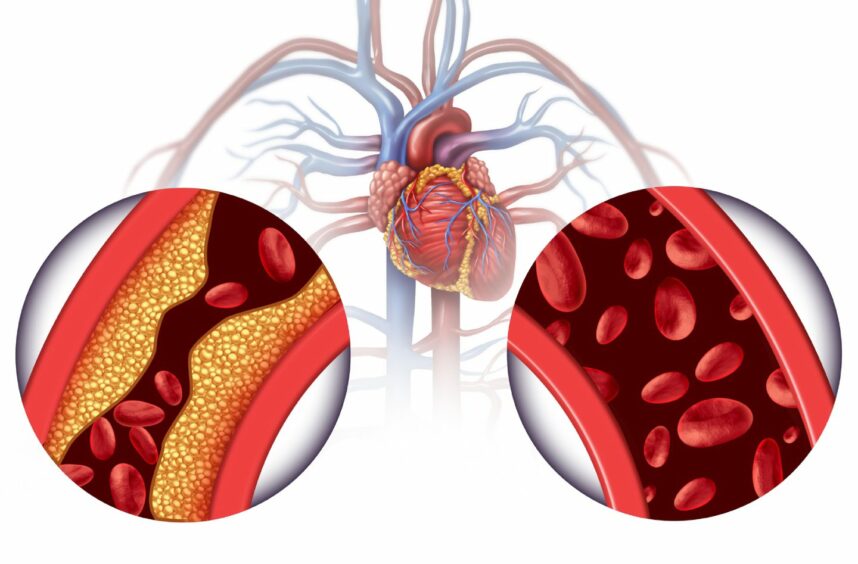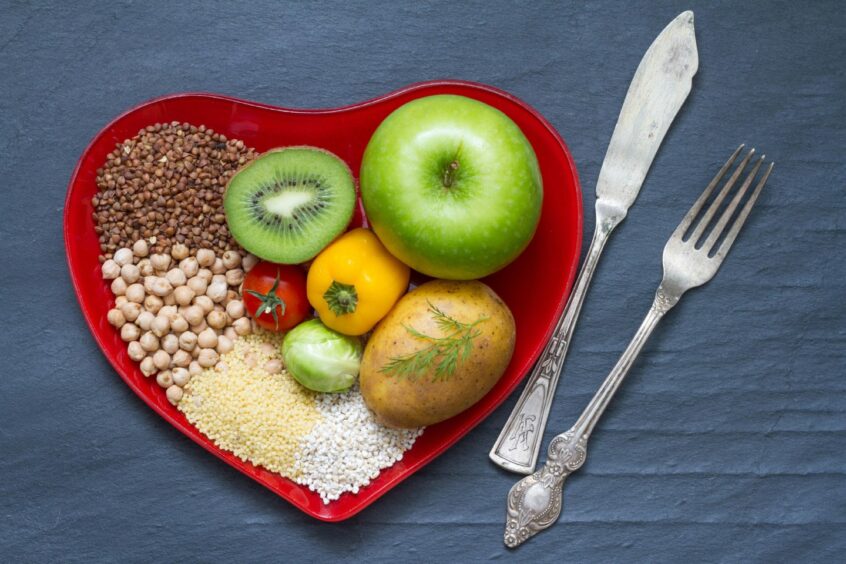Leading a healthy lifestyle is one of the key factors that can help improve your cardiovascular health and prevent problems later in life.
Being inactive can cause fatty material to clog up your arteries, which may lead to a heart attack, and getting your heart rate up also helps in terms of blood pressure, cholesterol and glucose levels.
Coronary heart disease is one of the leading causes of death in the UK and globally – which is why it’s important, whatever your age, to keep your ticker ticking along nicely and reduce your risk of heart problems.
Here, experts talk through some key ways you can help maximise your heart health…
Diet
A healthy, balanced diet is key, starting with keeping fat, sugar and salt to a healthy limit.
“Too much fat and sugar in the diet can lead to weight gain,” says Dr Helen Flaherty, head of health promotion and education at Heart Research UK (heartresearch.org.uk).
“Too much salt can increase your blood pressure and too much saturated fat can increase the ‘bad’ cholesterol in your blood, all of which put you at an increased risk of heart disease.
“Saturated fats tend to come from animal sources such as fatty meats, cheeses, cream and butter.”
Try to avoid ultra-processed foods that are often high in these elements, she advises:
“Learning how to cook simple, affordable and healthy meals, avoiding fast food and less healthy convenience foods could help to steer people away from a poor diet and poor health.”
It’s not just about what you limit diet wise – but what you get plenty of too. Following the Mediterranean diet is a great way to improve your heart health, says Ruth Goss, senior cardiac nurse at the British Heart Foundation (bhf.org.uk).
“It’s been shown to help reduce the risk of developing type 2 diabetes, high blood pressure and raised cholesterol,” she says.
“The best foods to get these benefits include lots of fruit and vegetables, beans, lentils, wholegrains as well as fish, white meat and nuts and seeds along with some low-fat dairy produce and fat from unsaturated sources like olive oil.”
And don’t forget about fibre, which can help with maintaining a healthy weight and lowering your risk of heart disease, Flaherty adds: “Dietary fibre can only be found in foods that come from plants, such as wholegrain cereals, wholemeal bread, wholemeal pasta, brown rice, fruit, vegetables, beans, and lentils.”
Alcohol
Not only are beverages like beer and cocktails often high in calories, drinking too much alcohol can increase your risk of high blood pressure and coronary heart disease.
“Keep an eye on your alcohol intake and try to stick to the guidelines of no more than 14 units spread over three or more days each week,” says Flaherty.
“Look for drinks with a lower alcohol content, or alcohol-free alternatives, such as reduced calorie soft drinks or mocktails and herbal teas.”
Exercise
How much exercise do you need to improve your cardiovascular fitness?
“Research shows that any amount of physical activity, no matter how long or short, is good for heart and circulatory health,” says Goss.
“Target 150 minutes of moderate intensity physical activity a week, [which] can be split up into multiple sessions to suit you.”
This could include walking, dancing, lawn mowing or cycling. It’s never too late to start moving, Goss adds: “Taking up exercise in later life, even if you’ve never done much before, can still bring benefits.
Check with your doctor first about what exercise is right for you if you have a heart or circulatory condition.”
As well as dedicated fitness activities, try to limit how long you’re sedentary each day, which is also correlated with poor heart health.
“We should ideally aim to sit down for no more than eight hours each day, but this can be difficult, especially if we have a desk-based job,” says Flaherty.
“Try setting a movement reminder once an hour to get up and move, even if it’s just to walk to get a glass of water or doing a few star jumps.”
Smoking
“Smoking can damage your heart and blood vessels, which increases your risk of having a heart attack,” says Flaherty. “Quitting smoking can be difficult, but it is an important step for reducing your risk of heart disease.”
Goss agrees: “Remember, it’s never too late to stop. If you are struggling, check in with your GP to see what services and support are available to you.”






Conversation